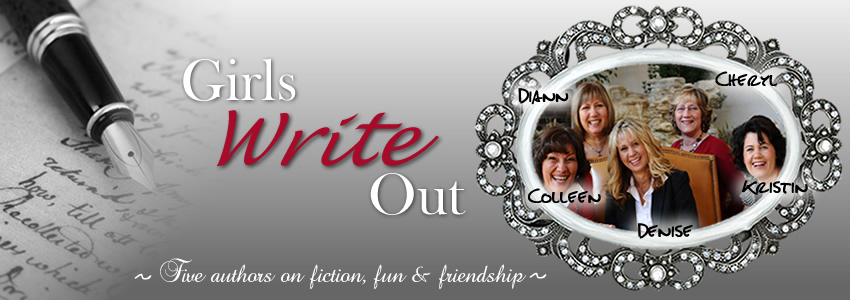If you've been writing novels for any length of time, you've gotten stuck. I'm not talking about writer's block, I'm talking about STUCK. When this happens to me, it means 1 of 2 things. Here they are, and here's what I do about them.
1. There's a foundational problem with my plot. (Goal, motivation, conflict, stakes, etc) I try to make sure these are solid before I start writing, but sometimes I'm wrong. This is my least favorite kind of stuck because it sometimes means going back and making major changes in previously written scenes.
a. Diagnose the problem. Go over plot basics and see where the story is falling short.
b. Go to my writing library and pull out books (or chapters) on the subject. Read and weep--Ahem--I mean apply.
c. Brainstorm possible solutions with my critique partner.
d. Once I've decided on the appropriate "fix", either go back and make changes or make a note to do so in re-writes.
2. I have no idea where my story's going next.
a. Go for a walk, drive; throw in a load of laundry and daydream about what could happen next until I have a plan I'm excited about.
b. Watch a movie or read a novel, keeping an eye out for plot developments that may work for my story--the entry of a romantic threat, an illness or injury, financial setbacks, family secret, etc.
c. Brainstorm possible ideas with my critique partner.
d. Make a list of possible scene ideas.
d. Put the scenes in a logical order. (Complications should go from smallest to biggest). Some writers use scene flashcards, some simply list them in order. My personal favorite is (for lack of a better title) scene bubbles as pictured above. I shade the bubbles when the scene is in the hero's POV and switch the scene order as necessary by changing the arrow directions.
What do you do when you get stuck?
Labels: writing


3 Comments:
Personally, I think writer’s block is a myth, but I’ve been stuck more than a few times. My stuckness usually comes from not fully understanding the events that would lead up to the event in the plot that must take place for the story to work. I run into things like why would a woman leave a loving husband or why would a teenager want to fake her own death? I’m still stuck on that last one. And more recently, I’ve been stuck on how do I show readers that it is significant that a female character accomplishes something that the male protagonist was trying to accomplish?
For the first kind of stuckness, it find it helps to break it down in smaller pieces and work backwards. Instead of thinking about a woman leaving a loving husband, I think instead about the tipping point that caused her to pack her clothes and walk out the door while he was at work—a call from her boyfriend, for example. Then I can think about what led to her having a boyfriend—maybe a business trip with one of her male co-workers.
The second kind of stuckness is harder because I’m fighting against the way a lot of people think the world ought to work and the way it does work. It may be necessary to draw upon the playground taunts, “You run like a girl.” But in my case it gets interesting because the story is inspired a Bible story in which it is a woman who is chiding a man for allowing a woman to usurp his honor. I’m not sure if I’m completely unstuck on this one, but my approach is to stay even more true to the Bible account in this area than in other areas of the story. Other than that, I’m looking for ways to show why the woman shouldn’t have been forced to do what she ends up doing.
Love your scene bubbles! For a second before I looked at the picture, I thought maybe you were using a program to make bubbles. I should have known better with Miss Pencil and Paper Girl. LOL
Great post, D!
Thank you, Girls!
I appreciate you sharing about the writing experience and solutions.
My problem is when to listen to that internal editor. I will be in the middle of writing a scene and hear, "you're about to write the scene like that?" Ugh! What to do?
Post a Comment
<< Home